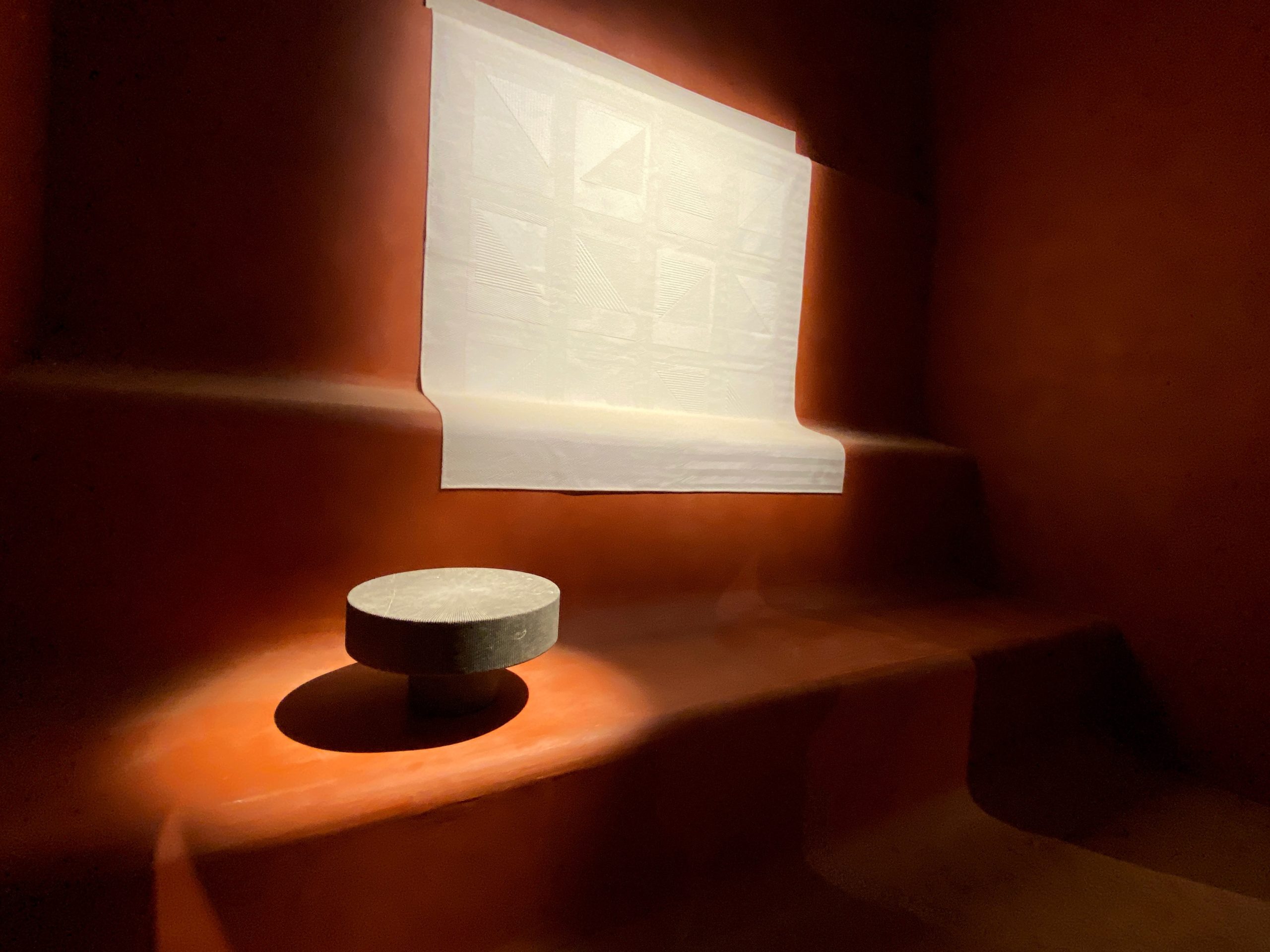An extraordinary exhibition in a new concept. After one and a half years of postponement, Milan’s renowned architect and urban planner Stefano Boeri (designer of the Vertical Gardens, Giardini Verticali and other buildings) has come up with the idea of a furniture and design exhibition to be held in September at a different time from usual. Interior designer Eszter Radnóczy tells us about this year’s Milan Design Week.

This year the organizers’ idea was to show the latest products of the manufacturers in a museum-like concept, in order to reduce costs and increase transparency. I spoke to several of our partners before the exhibition, they were excited and a little disappointed. Disappointed, because there was little time to prepare, and many did not even want to participate, saying that it was risky, there would be few visitors, it could be canceled at the last minute due to unexpected consequences of the virus, and there would be no opportunity to show the full range of products.
I arrived at the venue with curiosity and left happy after a day’s visit.
The event was transparent, with companies lined up neatly one after the other, mostly with strong messages and stands that trigger curiosity. Creativity could also be seen in such a small space of a few hundred meters and the distinctive characteristics of the manufacturers were recognizable. Of course, anyone familiar with the vast and endless exhibition at the Salone del Mobile was certainly not expecting this. However, the latest product, an important message, a creative idea about the product, its appearance or its quality, quickly found its space.

There was no need to register to visit the stands, no need to look for the owner or representative, they would just sit on the sofa on display or behind the counter. I enjoyed this democratic approach: I could sit next to them, have a conversation and everyone seemed more relaxed and considerate than usual. Surely this concept favors professional visitors, previous knowledge of products and manufacturers is necessary to understand the different exhibition.
Milan Design Week is not just about the exhibition at Fiera, but also about the venues outside. This week, design dominates the city more than usual. The permanent showrooms will offer special programs and installations to visitors. Smaller manufacturers, who do not have showrooms in Milan, will organize joint events.
The “big ones” are looking for venues where the space in itself offers a great experience. A multitude of palazzos welcome visitors, where the old and antique meet the new and innovative. Milan is colorful, very colorful and, as always, bold. Everything is bright, shiny, too big, too small, rough and soft. Contrasts come together in a surprising proportion and become a defining experience.

Now to some of my experiences in detail:
Besides Italian design, I’m in love with French creativity. I love French design because of its eclecticism and its fantastic handling of geometry with curves and when it combines nature with technique. It’s truly fabulous. The Hermés exhibition in the Brera district was just like that. A village decorated with colorful geometric patterns, impulsive interior stages set within huge rustic clay walls, an experience of objects, space and color, the concept that combines tradition with innovation which is linked to Charlotte Macaux Perleman.

The French Institute in Milan is a beautiful building in itself, with a monastery courtyard in the centre, near the Basilica of Sant Ambroggio. At Fuori Salone, we had the opportunity to see designer Piere Nigro’s furniture in collaboration with Mobilier national. The Armadillo collection of furniture allowed the manufacturer to demonstrate virtuosity in woodworking. The exhibition presented the structure and logic of small pieces of furniture made up of solid wooden rectangles. The other product, the Hémicycle seating range, was produced in collaboration with the French manufacturer Ligne Roset, who was involved in its design and upholstery. The furniture’s metal frame and structure showed the creative technology in pieces.

The Nilufar Gallery in Via della Spiga and the Nilufar Depo always has surprises in store. Nina Yashar presents large-scale, eclectically selected projects and unique pieces, which she discovers through meticulous research and further develops with designers.
Entering the monumental atrium of the industrial building, we can admire the sculptures of Pietro Consagra Matacubi, born in 1920 and part of the largest international contemporary collections. The building’s stage is dedicated to the so-called Odyssey exhibition, where Andrés Reisinger’s first Italian show was held.

The designer talks about the relationship between the digital and the real world through a dialogue between the furniture and the projected image.

Last but not least, the installation called Jungle, by Khaled El Mays, is a work of beauty and sustainability.


